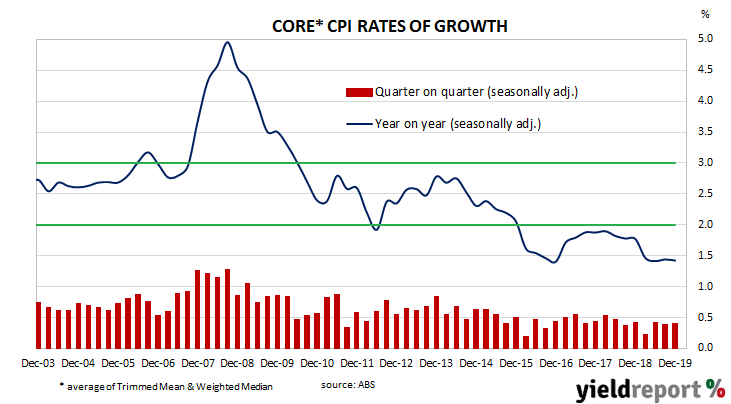In the early 1990s, entrenched inflation was broken by the “recession we had to have”, as it became known. Since then, core consumer price inflation has averaged around 2.6% which, coincidentally, is almost the midpoint of the RBA’s target range of 2%-3%. In recent years, various measure of inflation have been in a down-trend despite attempts by the RBA to increase them through historically low cash rates.
Figures for the December quarter have now been released by the ABS and both the headline and seasonally-adjusted figures exceeded market expectations. The headline inflation rate was +0.7% for the quarter, up from the September quarter’s +0.5% while the seasonally-adjusted inflation rate accelerated from +0.3% to +0.6%. On a 12-month basis, both headline and seasonally-adjusted inflation registered 1.8%, both having recorded 1.7% growth rates in the September quarter. The RBA’s preferred measure of core inflation, the “trimmed mean”, remained unchanged from September’s values on a quarterly basis and an annual basis. The trimmed mean inflation rate for the December quarter was +0.4%, in line with the market’s expected figure while the 12-month growth rate also remained unchanged at 1.6%.
The RBA’s preferred measure of core inflation, the “trimmed mean”, remained unchanged from September’s values on a quarterly basis and an annual basis. The trimmed mean inflation rate for the December quarter was +0.4%, in line with the market’s expected figure while the 12-month growth rate also remained unchanged at 1.6%.
Commonwealth Government bond yields finished higher, aided by higher US Treasury yields in overnight trading. By the end of the day, the 3-year ACGB yield had gained 5bps to 0.67%, the 10-year yield had increased by 6bps to 1.03% while 20-year yields finished 7bps higher at 1.43%.

